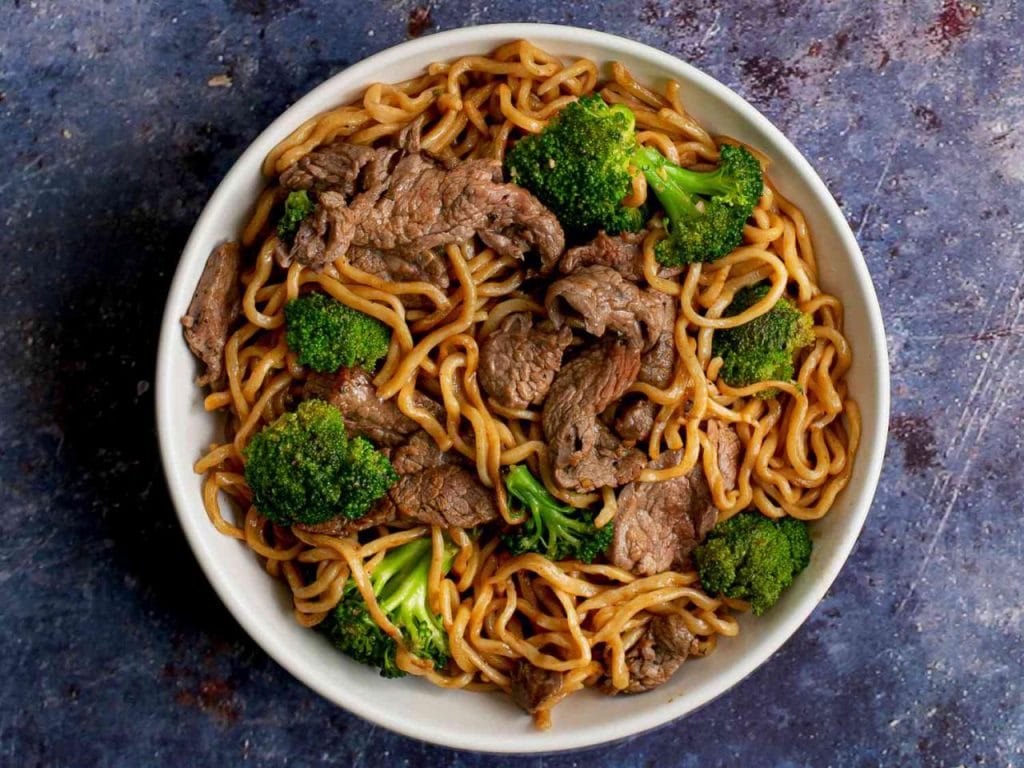Hello, dear reader! I’m thrilled to have you join me today as we embark on a flavorful journey. Our star of the day is a dish that has captured my heart and taste buds – the delectable Beef Lo Mein.
Cooking Beef Lo Mein is like painting on a canvas. Each ingredient adds a unique color and texture, creating a masterpiece that is as pleasing to the eye as it is to the palate.
Since we’re skipping the recipe part, let’s delve into some cooking tips that can take your Beef Lo Mein from good to great. These are insights I’ve gathered over years of culinary adventures, and I’m excited to share them with you.
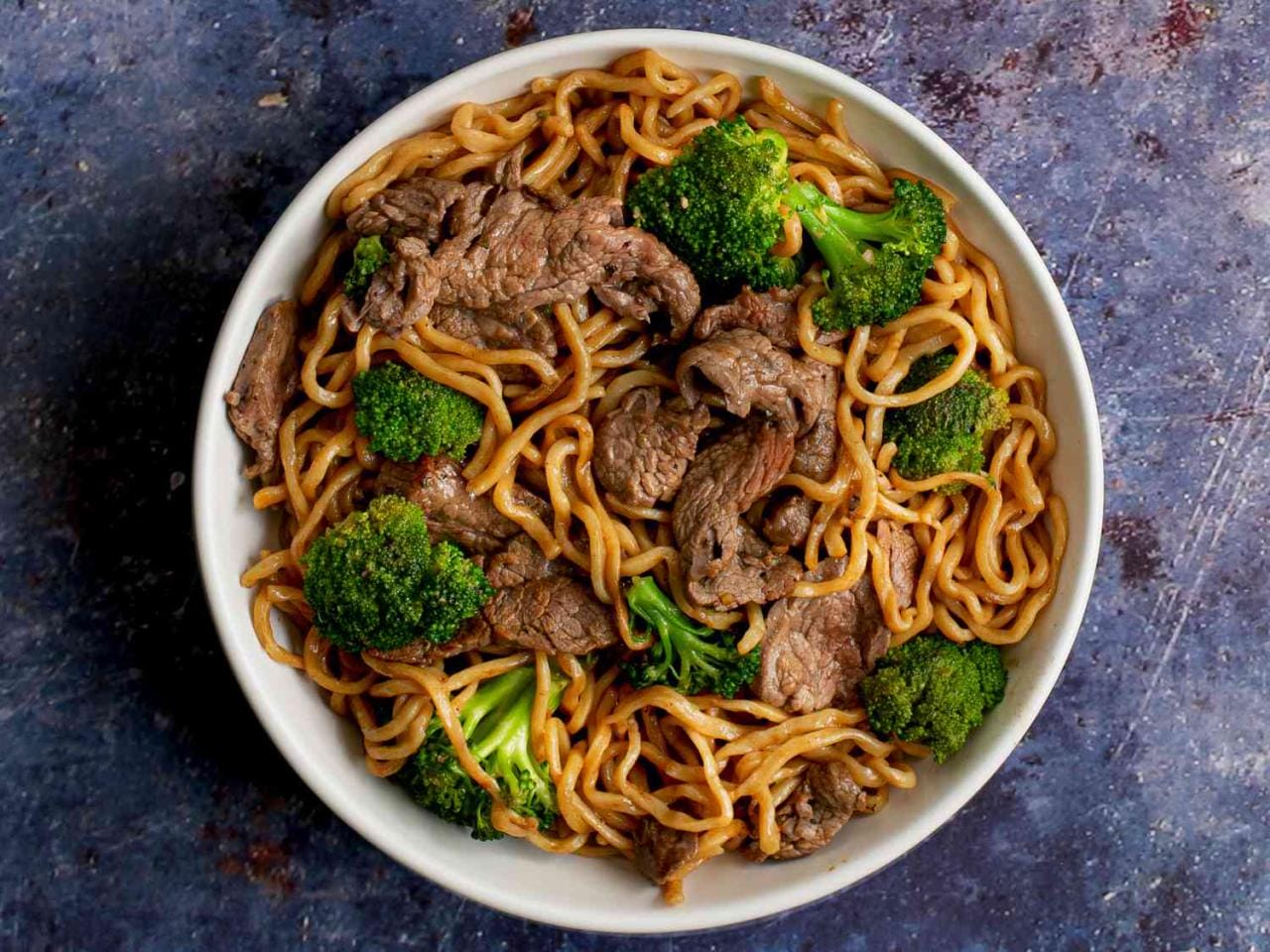
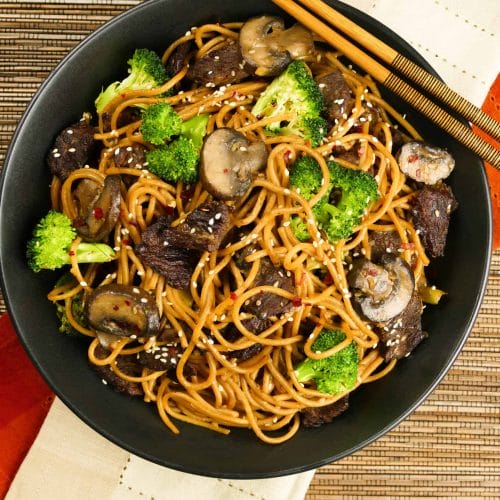
Chinese Beef Lo Mein
Equipment
- 1 large wok
- 2 bowls
Ingredients
- 1/4 pound flank steak sliced into thin strips
- 1 teaspoon cornstarch
- 1 teaspoon soy sauce plus 1 tablespoon divided
- 1 teaspoon vegetable oil for marinade
- 2 tablespoons vegetable oil for stir-frying
- 1 clove garlic minced
- 8 ounces fresh egg noodles
- 2 cups shredded Napa cabbage
- 1 medium carrot cut into thin strips
- 1/2 small red bell pepper cut into thin strips
- 1/2 cup fresh sliced mushrooms
- 1/2 cup sliced winter bamboo shoots
- 2 cups of mung bean sprouts
- 2/3 cup snow peas
- 1 scallion cut into thin strips
- 1 tablespoon Chinese rice wine
- 1 tablespoon dark soy sauce
- 1 teaspoon sesame oil
- Pinch of salt
- Pinch of sugar
Instructions
- In a bowl, mix together beef, cornstarch, 1 teaspoon soy sauce, and oil. Set aside.
- Heat a large wok over high heat until smoking slightly. Add 2 tablespoons oil and swirl to coat wok. Add beef and stir-fry until beef is slightly seared. Transfer beef to a bowl and set aside.
- Add garlic, cabbage, carrot, red bell pepper, mushrooms, and bamboo shoots. Stir-fry on high heat for a minute then add rice wine, pouring in a circle near the perimeter of the wok.
- Add beef back to the pan. Add noodles. Mix everything well from the bottom up for about 30 seconds. Cover and cook for one minute. Remove cover and add the remaining regular soy sauce, dark soy sauce, sesame oil, salt, sugar, scallion, bean sprouts, and snow peas. Toss to make sure everything is coated in sauce for another for another or until any remaining liquid has evaporated.
- Serve immediately.
Video
Notes
The Art of Cooking Beef Lo Mein: A Culinary Ballet
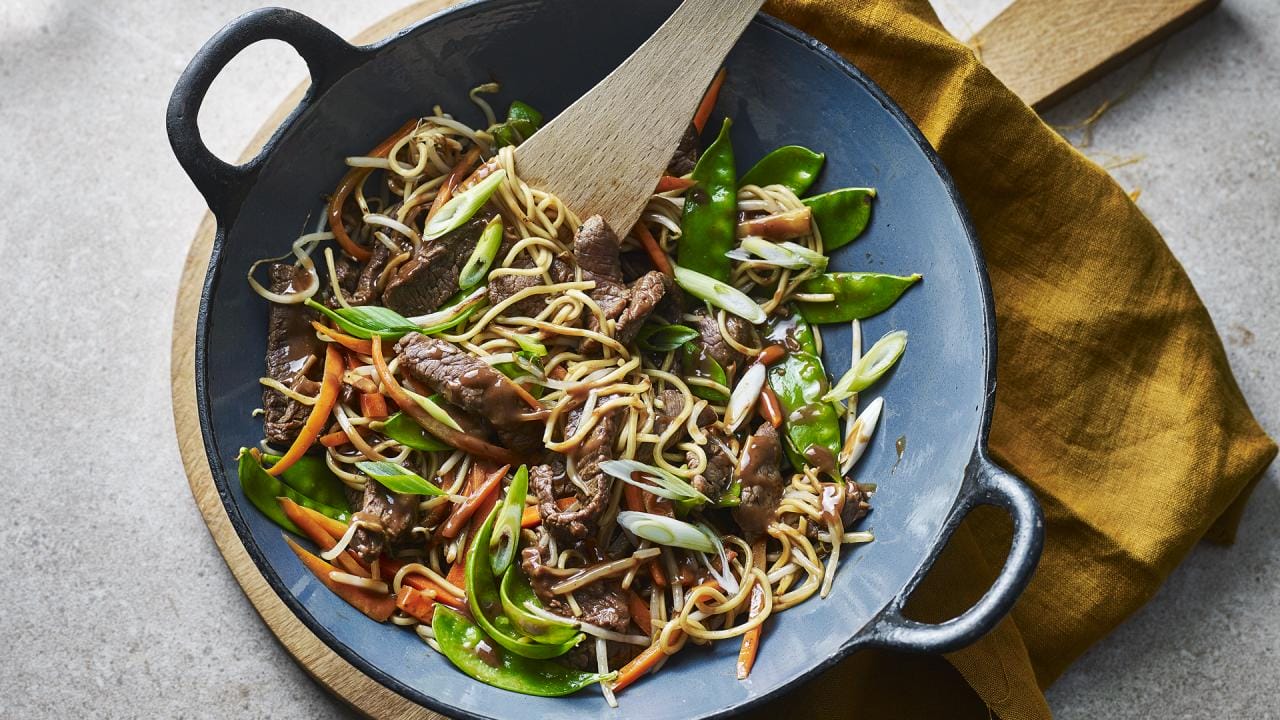
Cooking Beef Lo Mein is more than just following a recipe; it’s an art form, a culinary ballet where each ingredient plays a crucial role, and every step is a carefully choreographed move. It’s about understanding the harmony of flavors, the balance of textures, and the rhythm of the cooking process.
The dance begins with the selection of ingredients. The beef, preferably a tender cut like flank or sirloin, is the star of the show. It needs to be thinly sliced against the grain to ensure tenderness. The vegetables, usually a colorful medley of bell peppers, carrots, and bok choy, add crunch and vibrancy. The noodles, traditionally egg noodles, are the canvas on which this masterpiece is created.
Next comes the marination of the beef. This is a crucial step that imparts deep flavor and ensures the beef remains tender during the stir-frying process. A mixture of soy sauce, cornstarch, and rice wine works wonders, infusing the beef with savory notes while the cornstarch creates a protective layer that locks in moisture.
While the beef marinates, it’s time to prepare the noodles. They need to be cooked just until al dente, then rinsed under cold water to stop the cooking process and tossed with a bit of oil to prevent sticking. This ensures they remain firm and chewy when stir-fried later.
The actual cooking process is a whirlwind of activity that requires focus and precision. The wok needs to be heated until it’s smoking hot, then cooled slightly before adding the oil. This technique, known as ‘hot wok, cold oil’, prevents the ingredients from sticking. The beef goes in first, stir-fried just until it changes color, then removed and set aside. The vegetables follow, stir-fried until they’re just tender but still retain their crunch.
Finally, everything comes together. The noodles are returned to the wok, along with the beef and a generous pour of sauce – a savory blend of soy sauce, oyster sauce, and a touch of sugar. A few quick tosses, and the Beef Lo Mein is ready, the ingredients perfectly cooked and coated in a glossy, flavorful sauce.
Cooking Beef Lo Mein is a journey, an adventure that’s as exciting as it is rewarding. It’s about embracing the chaos, trusting your instincts, and finding joy in the process. And at the end of it all, you’re rewarded with a dish that’s a feast for the senses, a testament to your culinary prowess, and a celebration of the art of cooking.
Serving Suggestion
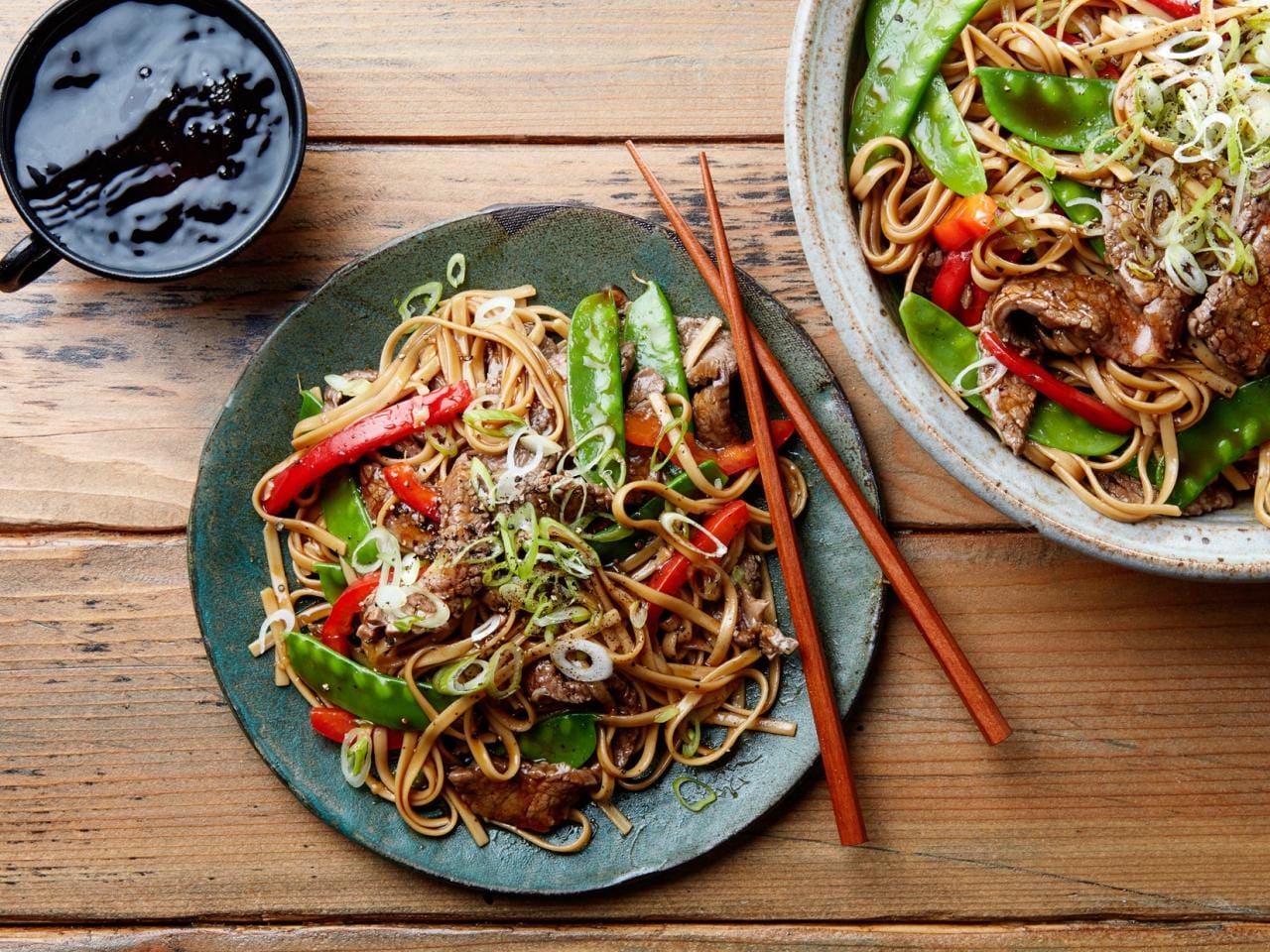
Serving Beef Lo Mein is not just about transferring the dish from the wok to the plate. It’s a culinary presentation, an opportunity to showcase the harmony of flavors and textures that you’ve meticulously crafted. Here’s how I like to serve this delightful dish:
- Choose the Right Dish: A large, open dish or a shallow bowl works best for serving Beef Lo Mein. The wide surface area allows the colorful ingredients to be spread out and displayed, making the dish as visually appealing as it is delicious.
- Presentation Matters: When transferring the Beef Lo Mein to the serving dish, don’t just dump it in. Use tongs or a large fork and spoon to gently lift and place the noodles, ensuring that the beef and vegetables are evenly distributed. This way, every serving will have a good mix of noodles, beef, and vegetables.
- Garnish Generously: Garnishing is the final touch that can elevate your Beef Lo Mein from good to great. A sprinkle of toasted sesame seeds adds a nutty flavor and a subtle crunch, while freshly chopped scallions bring a pop of color and a burst of freshness.
- Serve Immediately: Beef Lo Mein is best served hot, right off the stove. The heat intensifies the aroma and flavors, making the dish even more enticing.
- Accompaniments: While Beef Lo Mein is a complete meal in itself, you can pair it with some egg rolls or wonton soup for a full-on Chinese feast. For those who like a bit of heat, a side of chili oil or Sriracha sauce can be provided.
- Set the Scene: Serving Beef Lo Mein is also about creating an atmosphere. Set the table with some nice dinnerware, light some candles, play some soft music in the background. These little details can enhance the dining experience and make the meal even more enjoyable.
Remember, serving Beef Lo Mein is an act of love. It’s about sharing a dish that you’ve put your heart and soul into. So, take your time, enjoy the process, and most importantly, savor the reactions of delight and satisfaction from your loved ones as they dig in.
FAQs
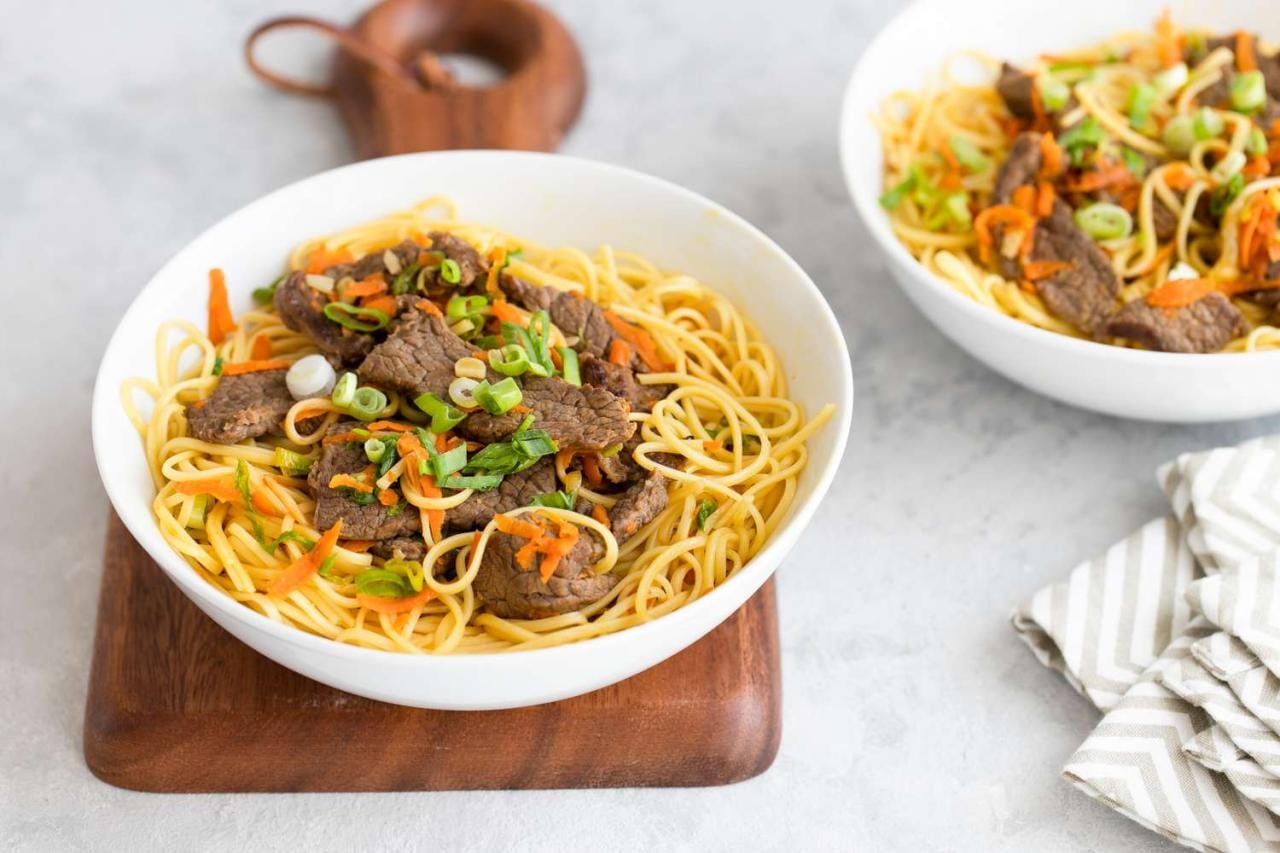
Over the years, I’ve encountered several questions about Beef Lo Mein. Here are some answers that might satisfy your curiosity:
Can Beef Lo Mein be made gluten-free?
Absolutely! Just replace the traditional egg noodles with rice noodles or any other gluten-free option.
Can I prepare this recipe in advance?
Yes, you can. However, I’d recommend making it fresh whenever possible as the flavors are more vibrant.
Can I use other types of meat for Lo Mein?
Definitely! Chicken, shrimp, or even tofu can be used as alternatives.
What vegetables can I use in Beef Lo Mein?
You can use any vegetables you like. Bell peppers, carrots, and bok choy are some of my favorites.
Is Beef Lo Mein spicy?
Not typically, but you can add some heat by including chili sauce or crushed red pepper flakes.
As I conclude this culinary tale, I find myself filled with a sense of contentment. Beef Lo Mein, for me, is more than just a dish. It’s a canvas where I can express my creativity, a comfort food that never fails to lift my spirits, and a culinary adventure that always leaves me excited for more.
So, my dear reader, I invite you to embark on your own journey with Beef Lo Mein. Trust me, it’s a ride worth taking.

